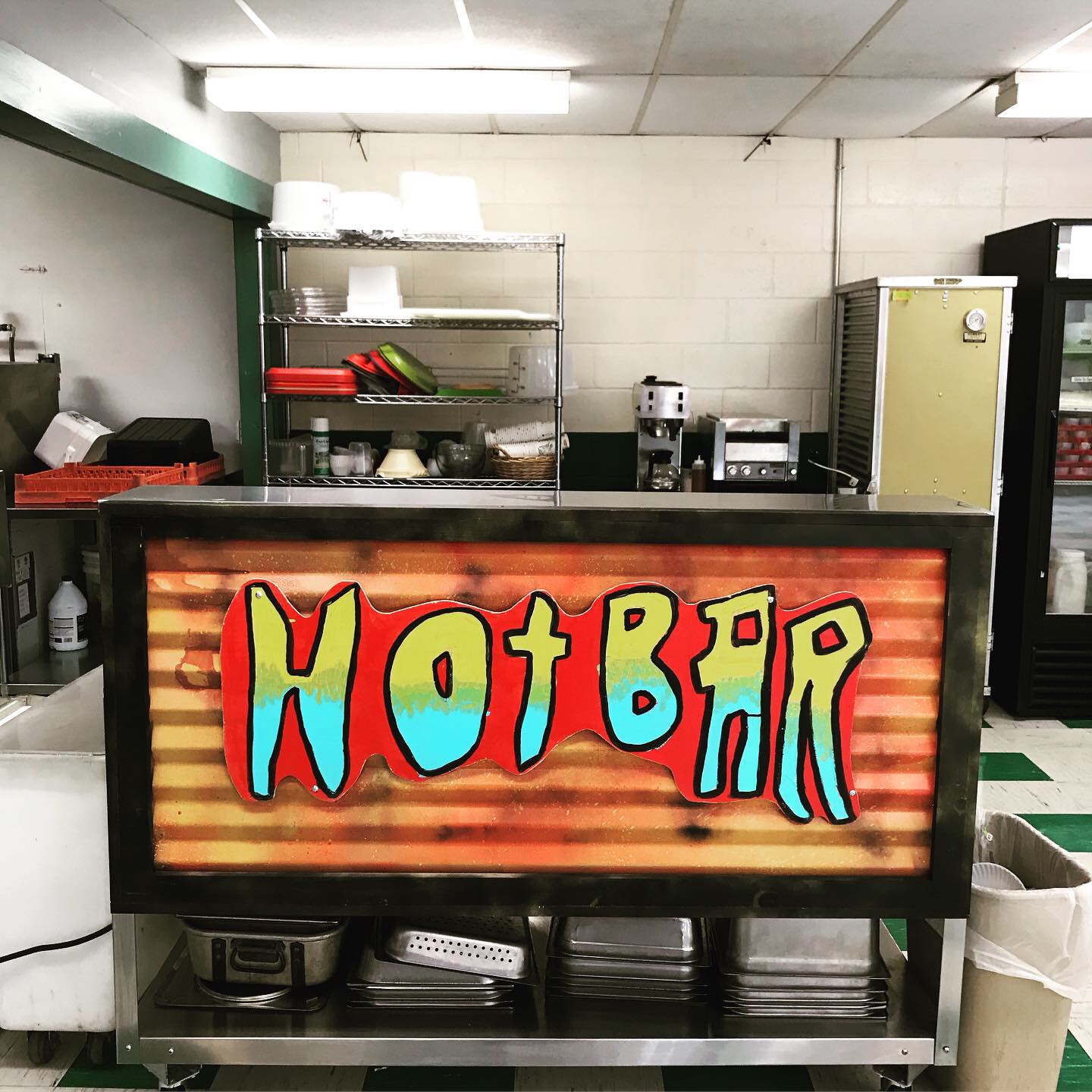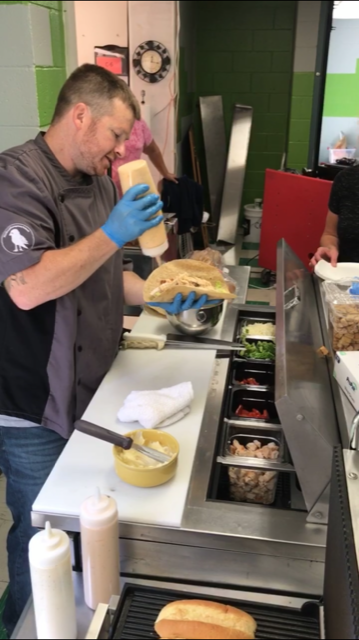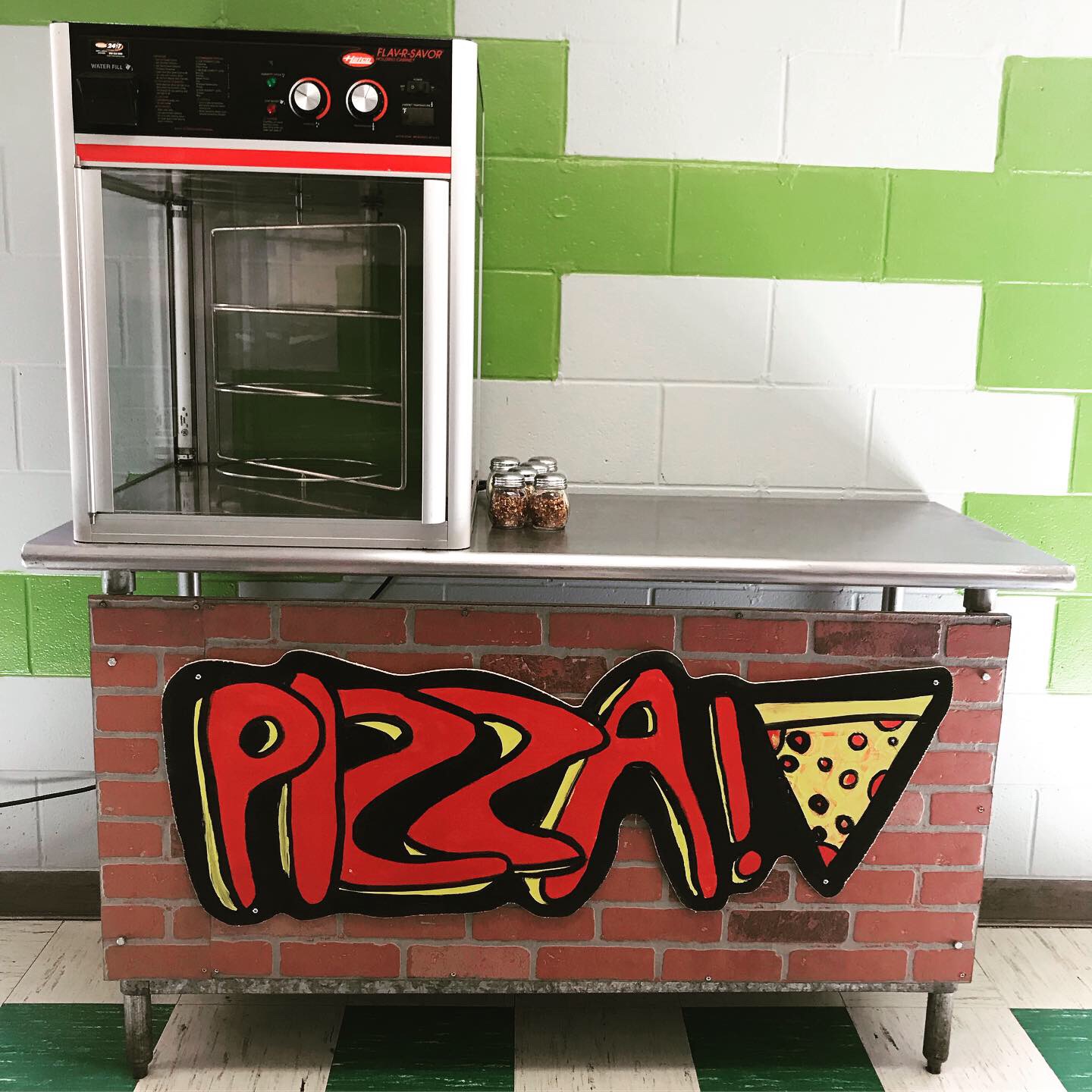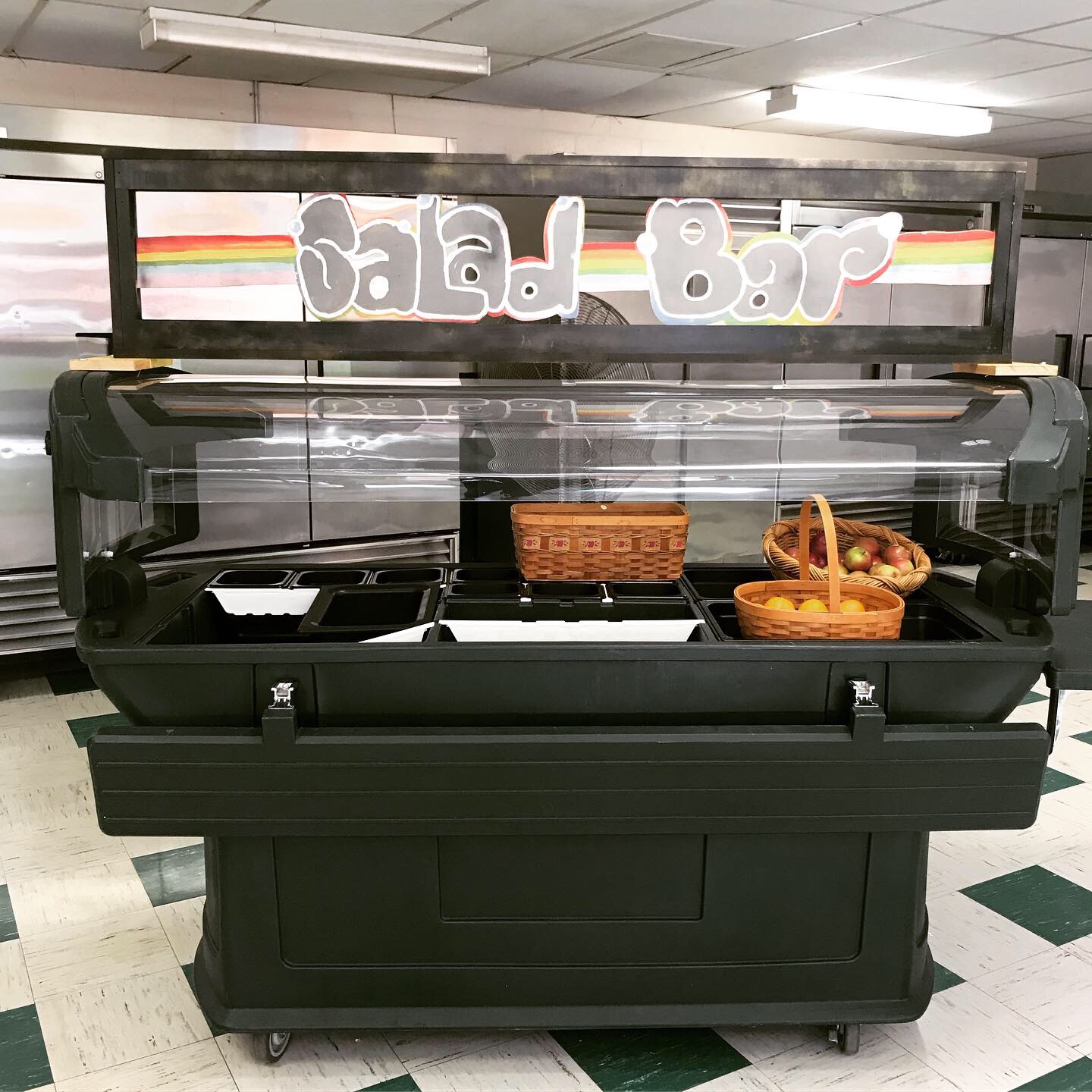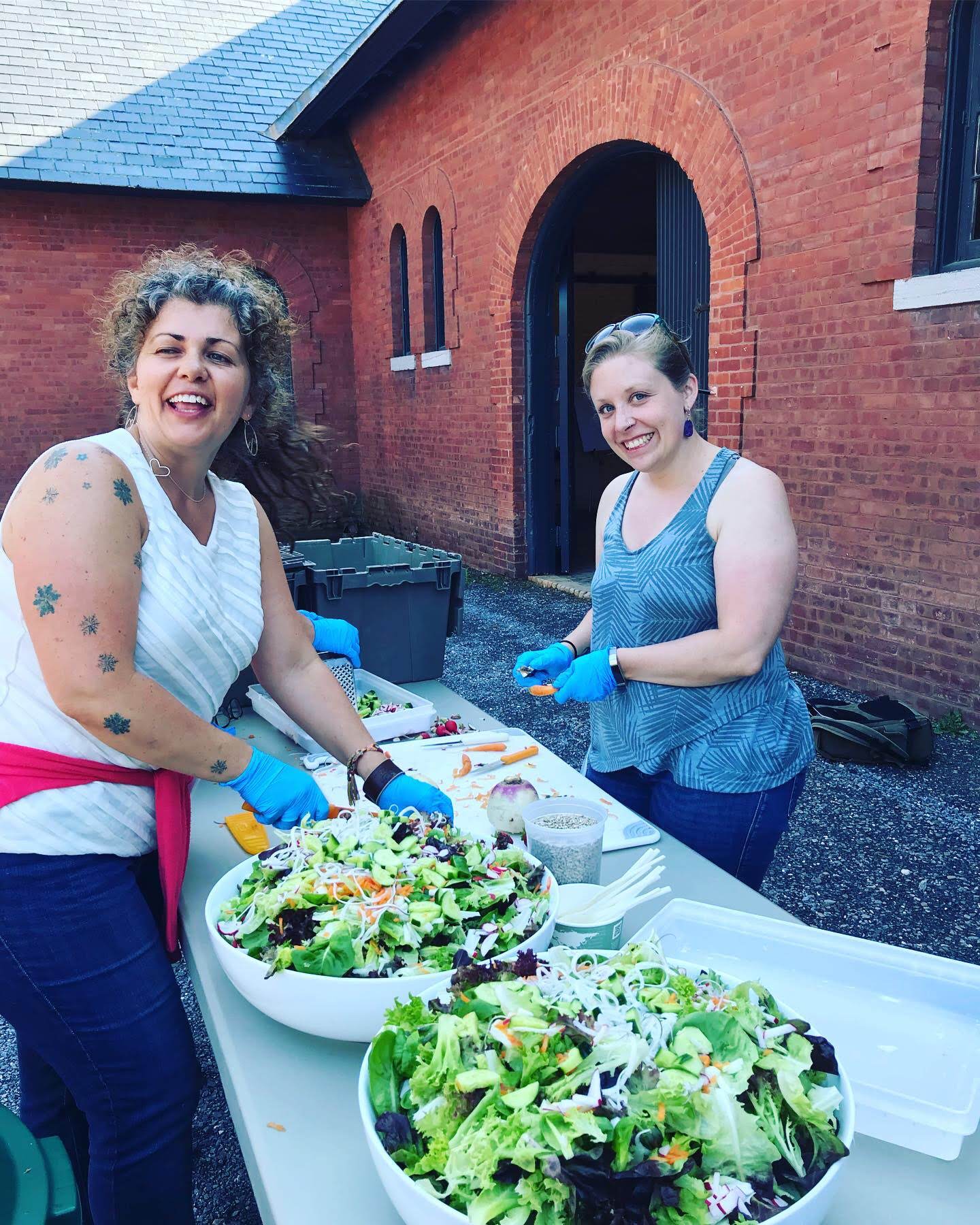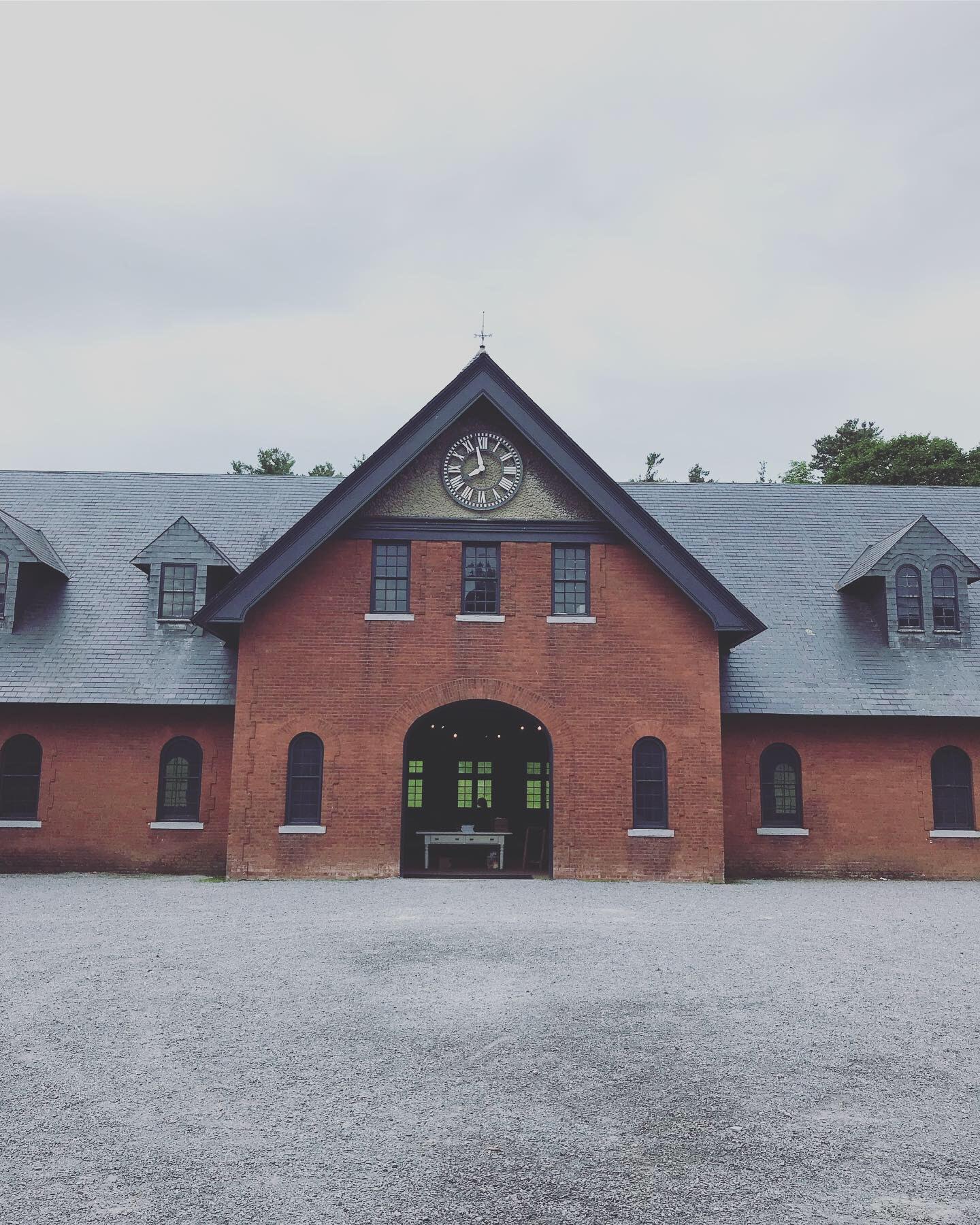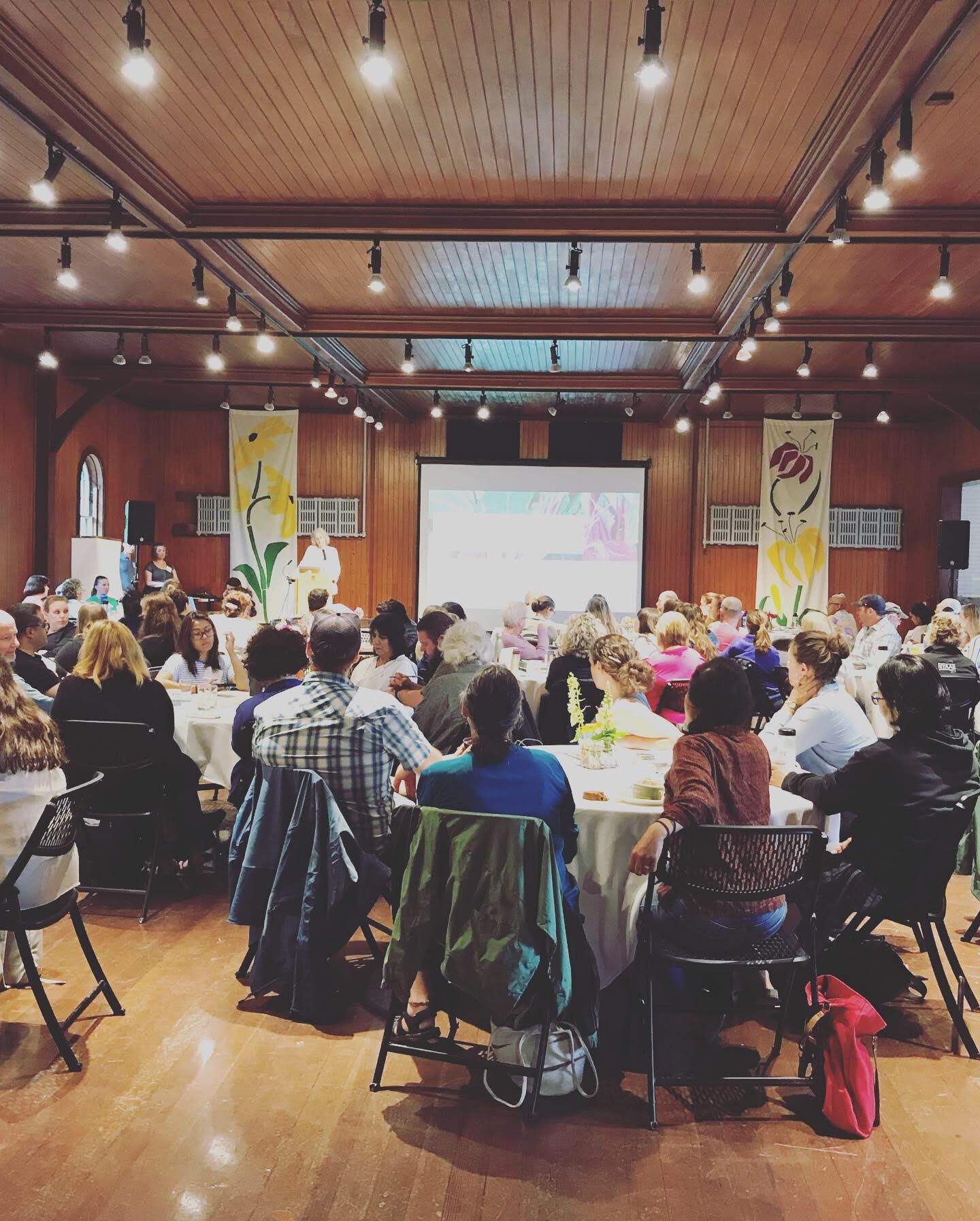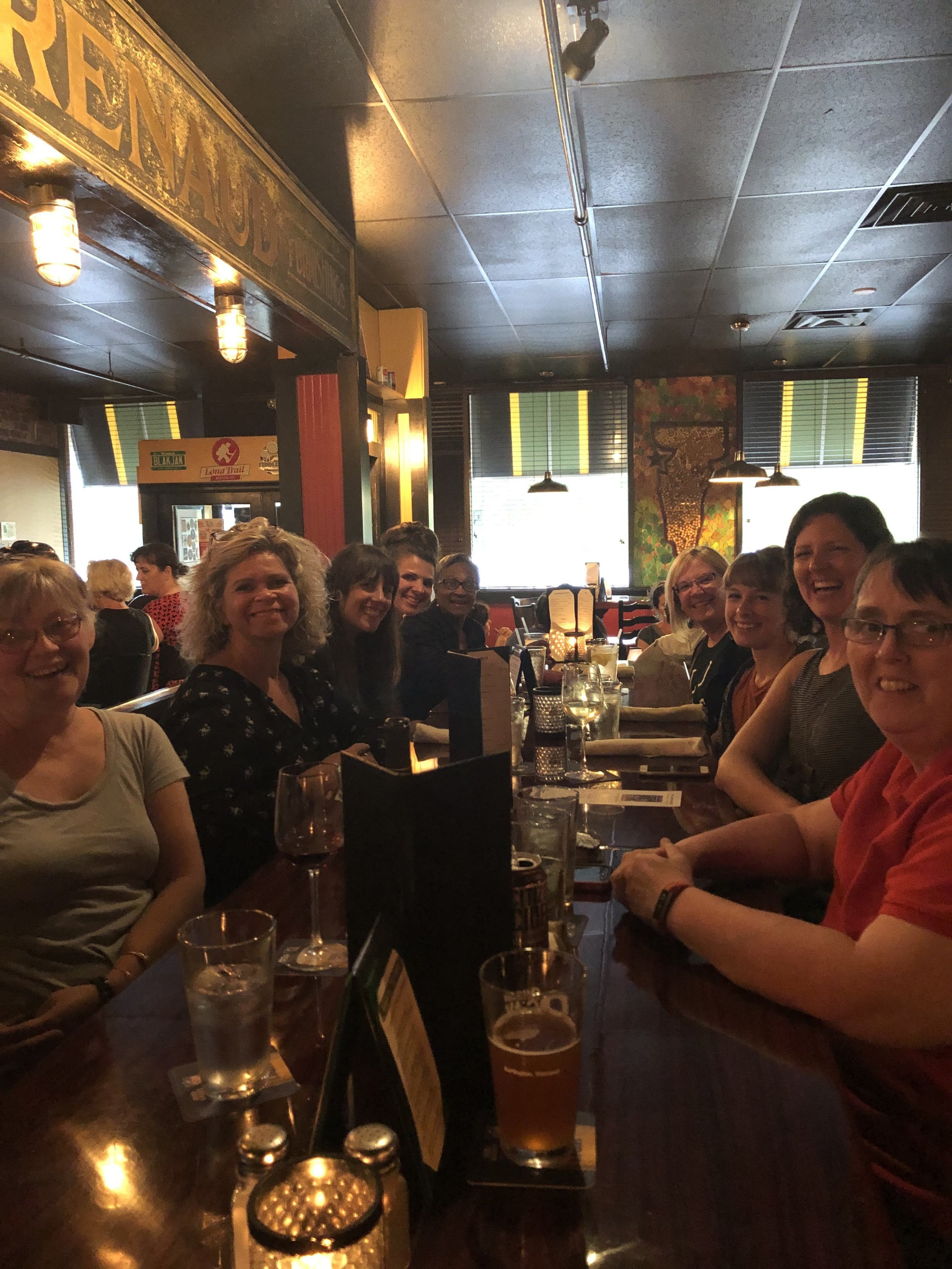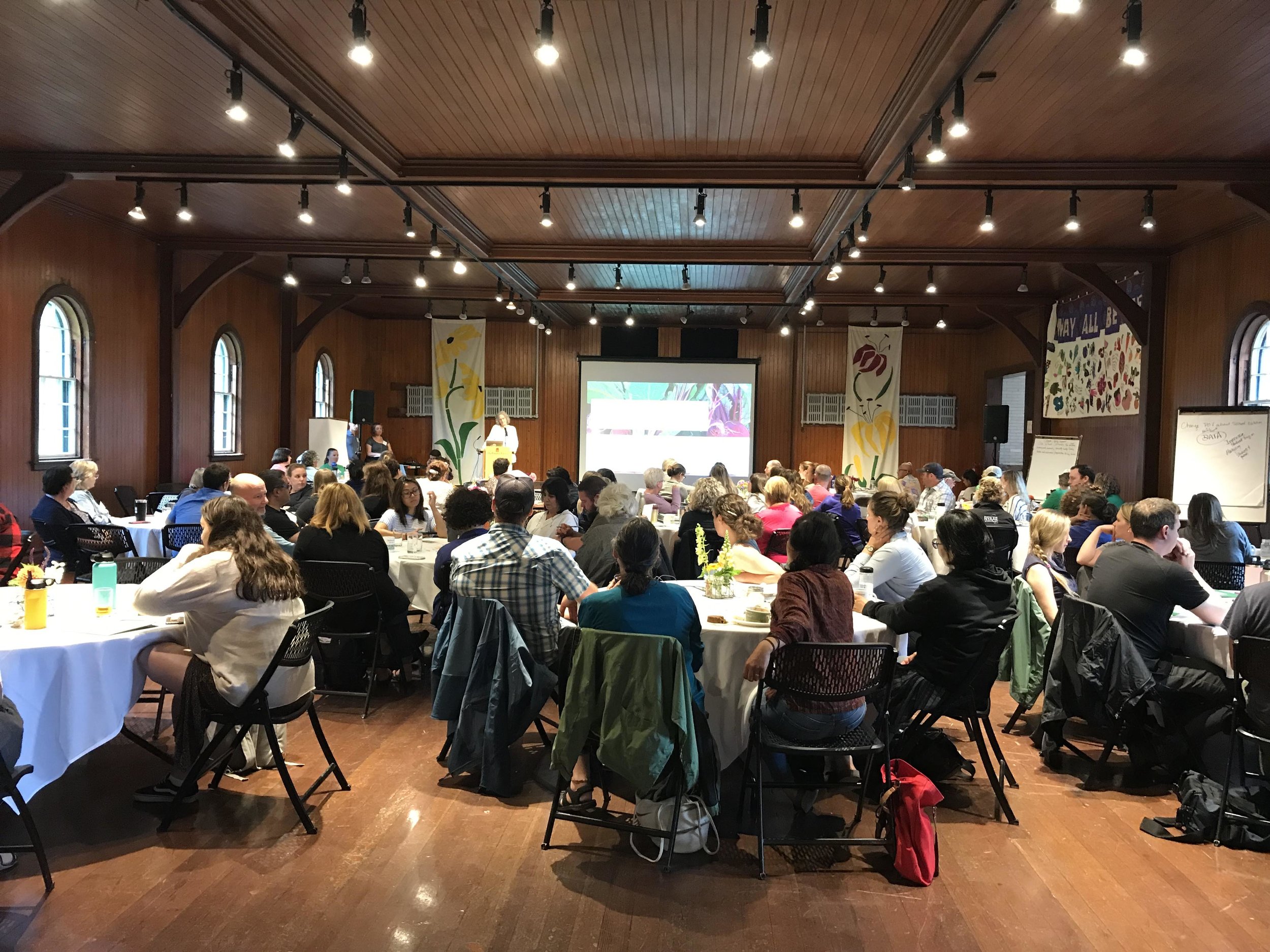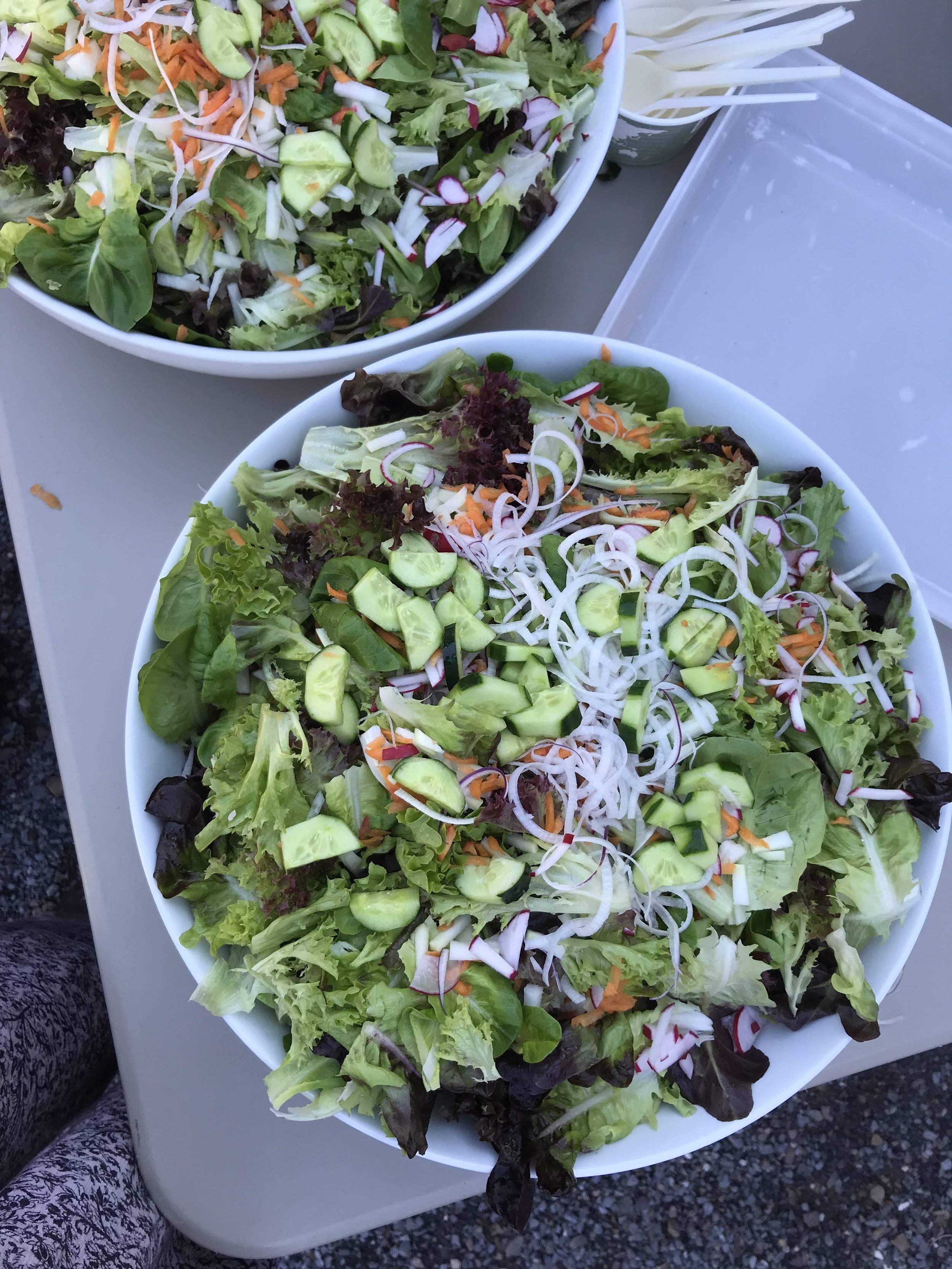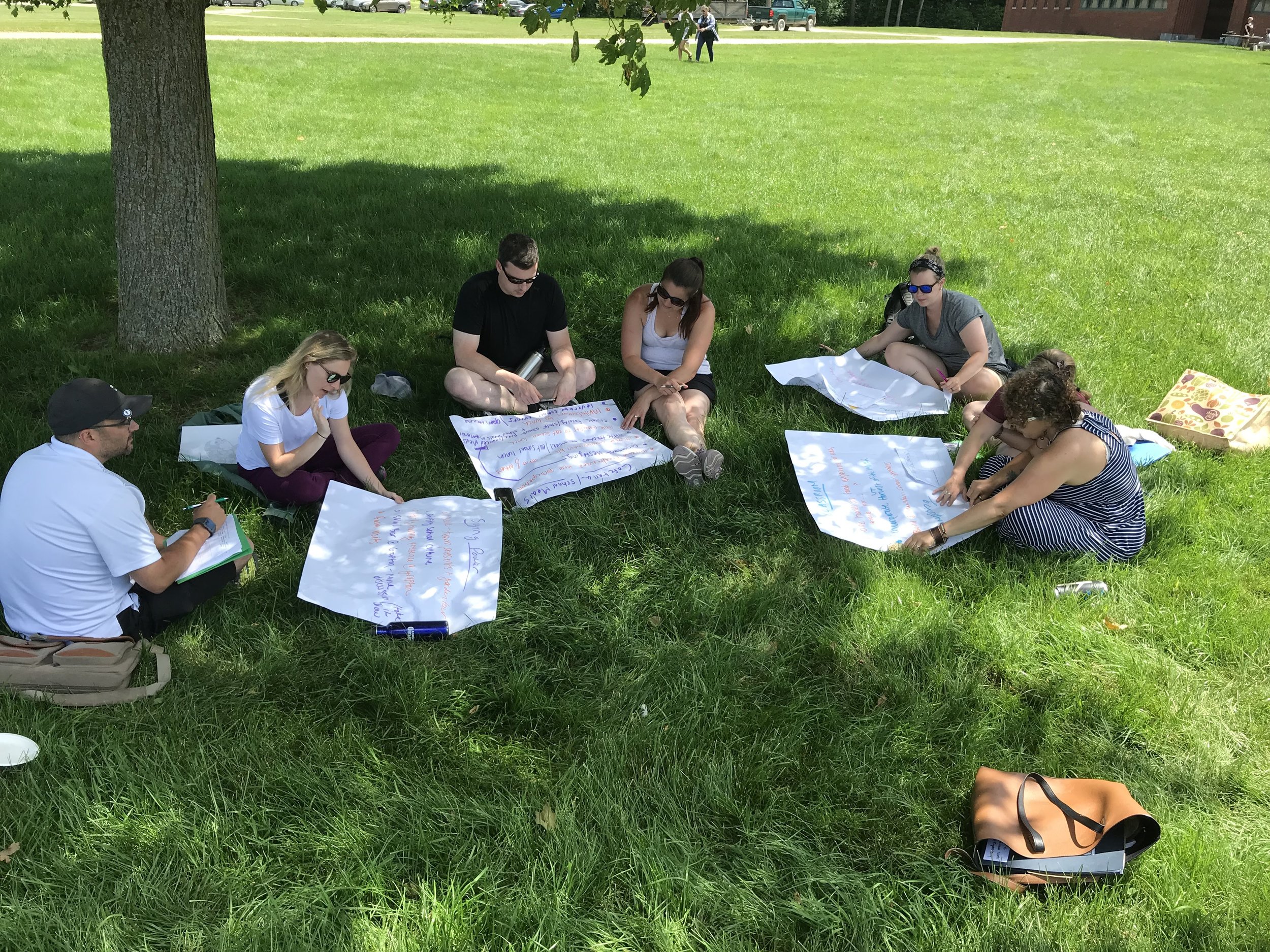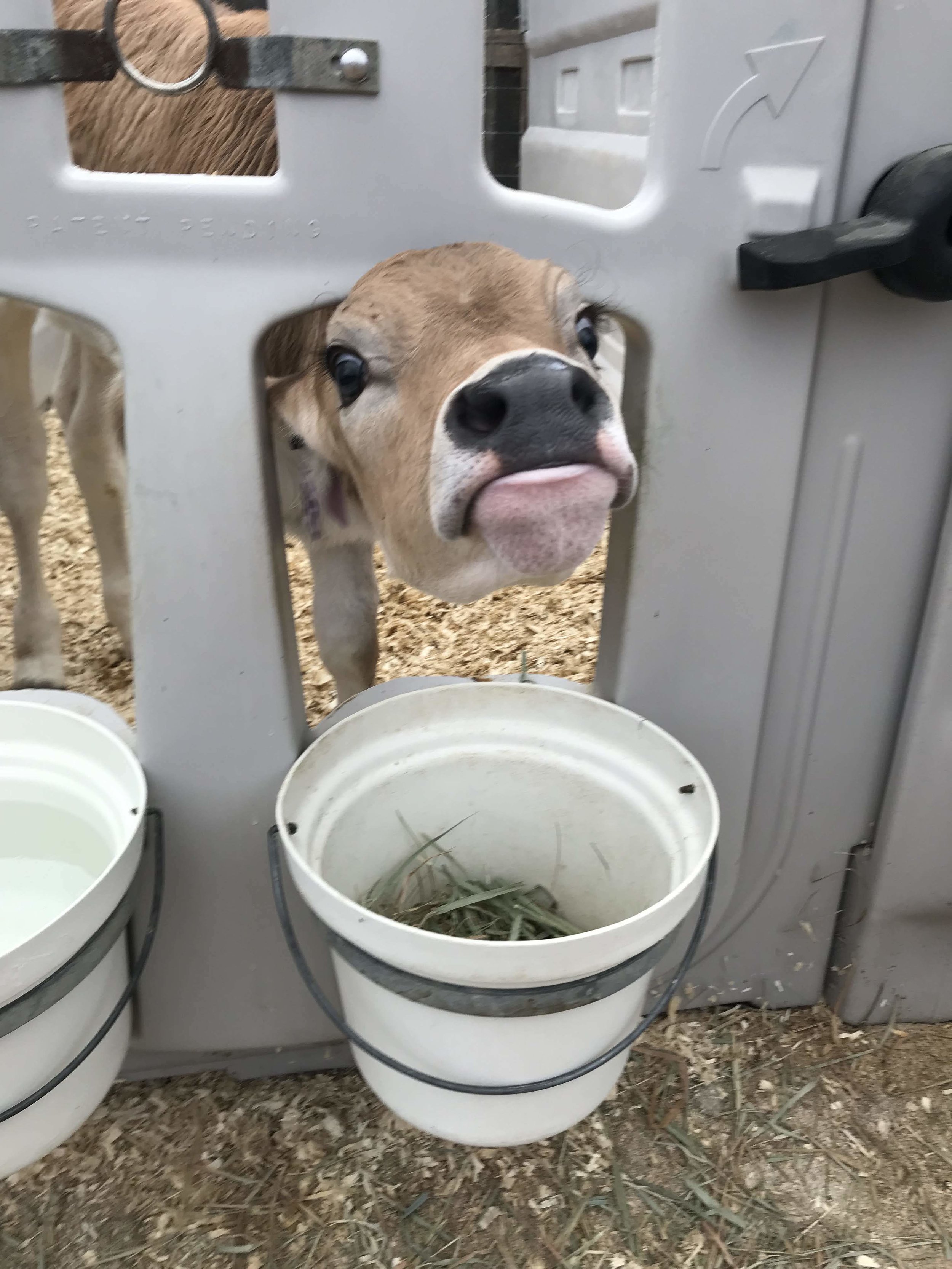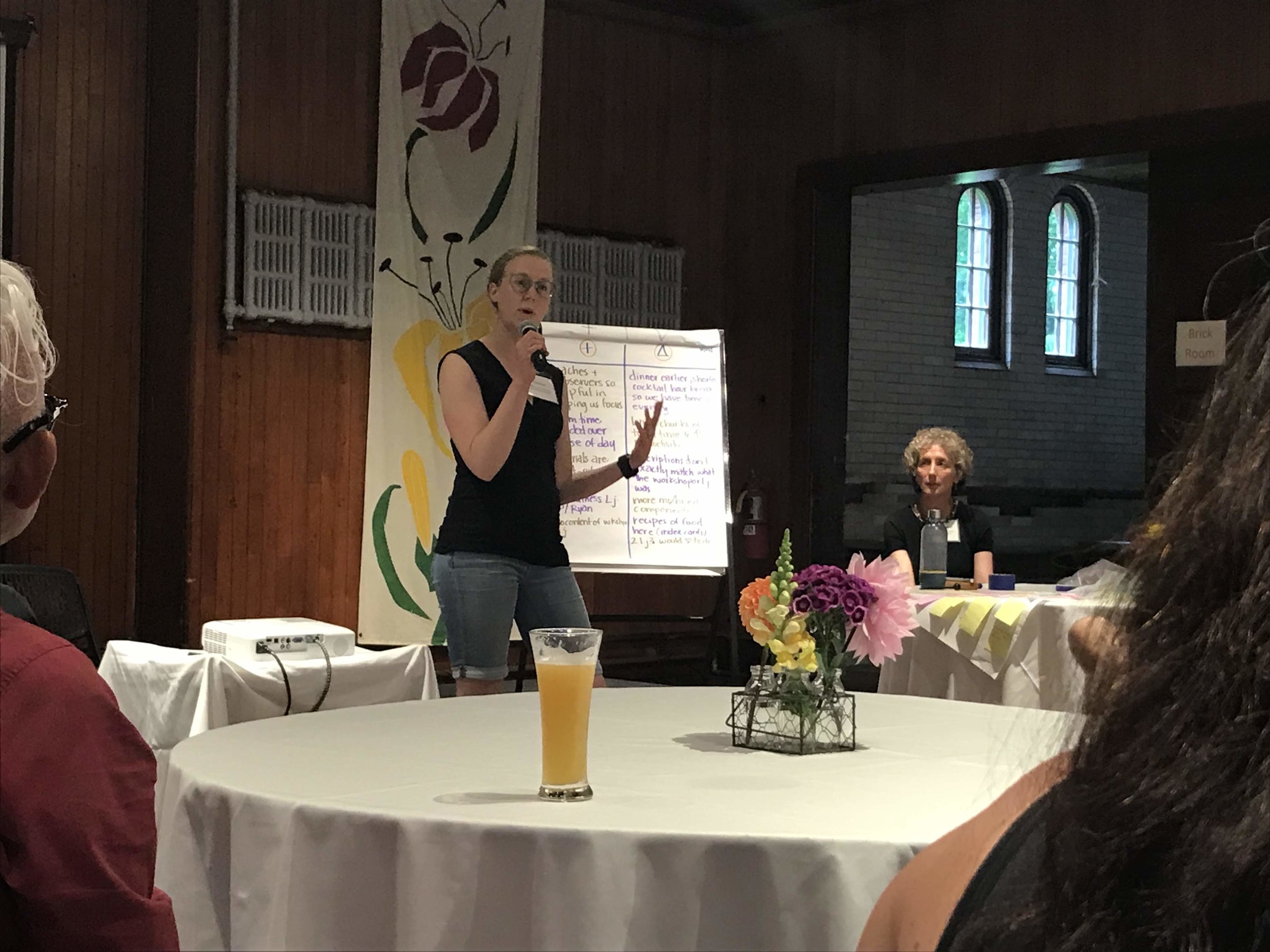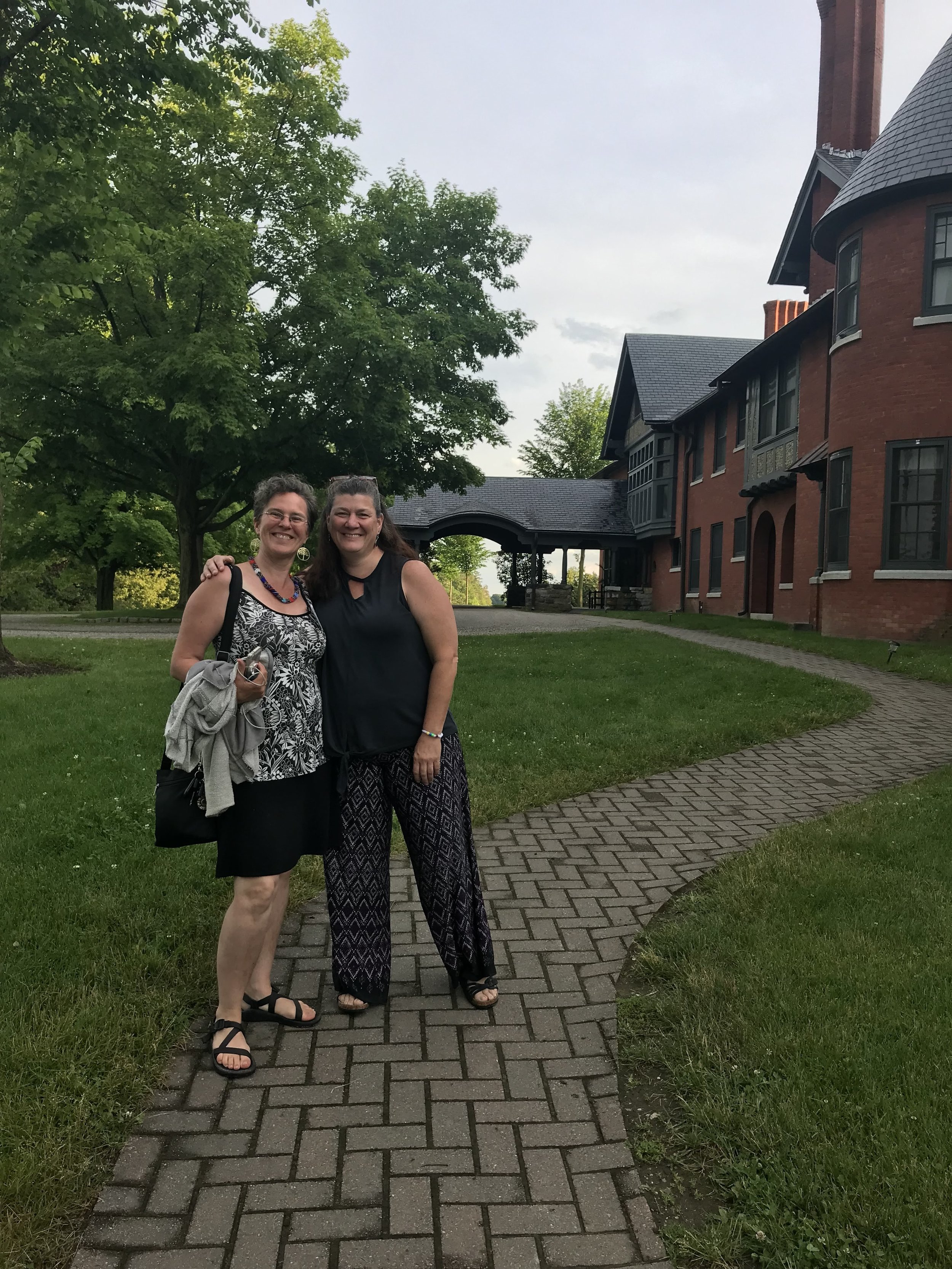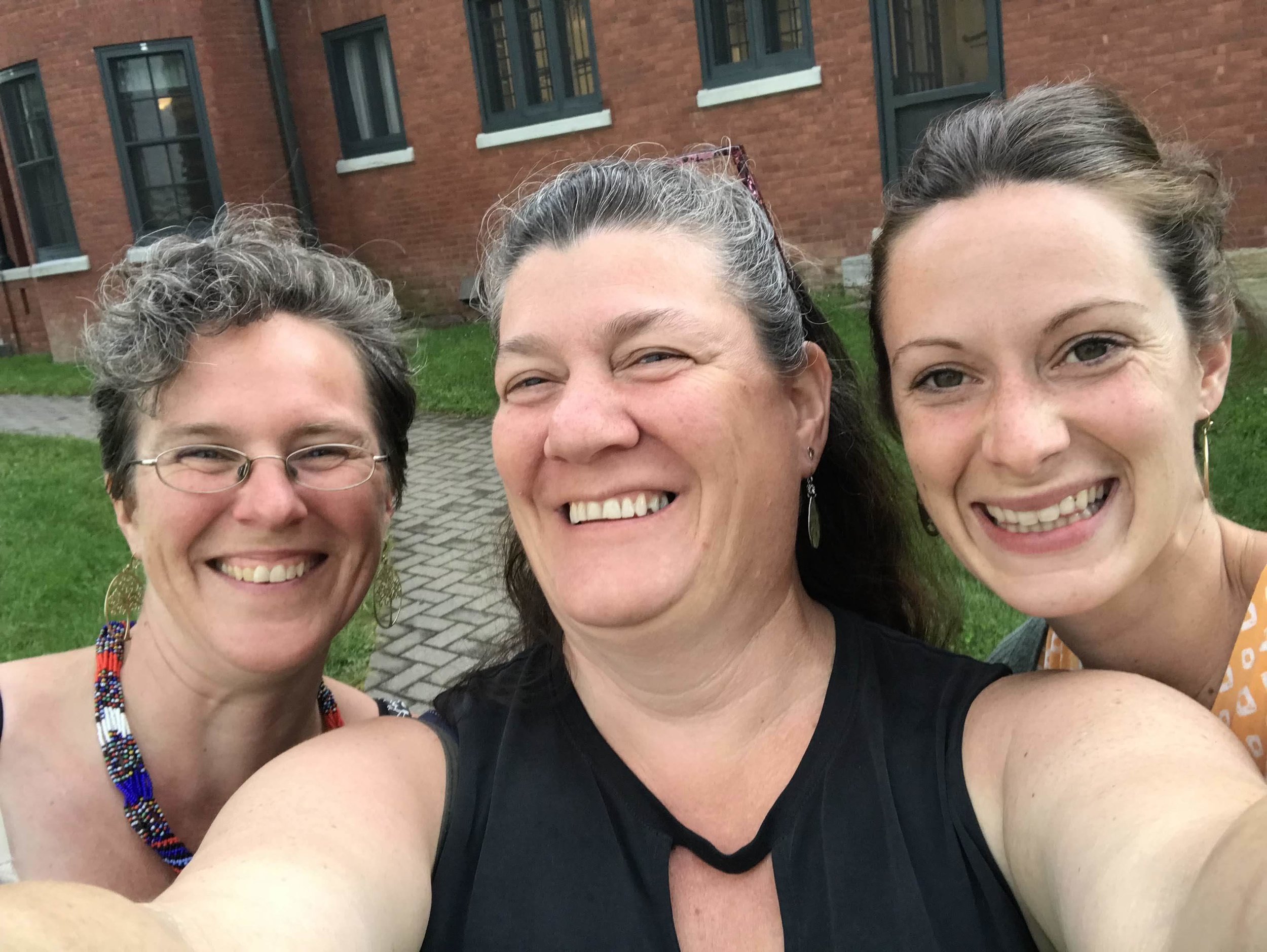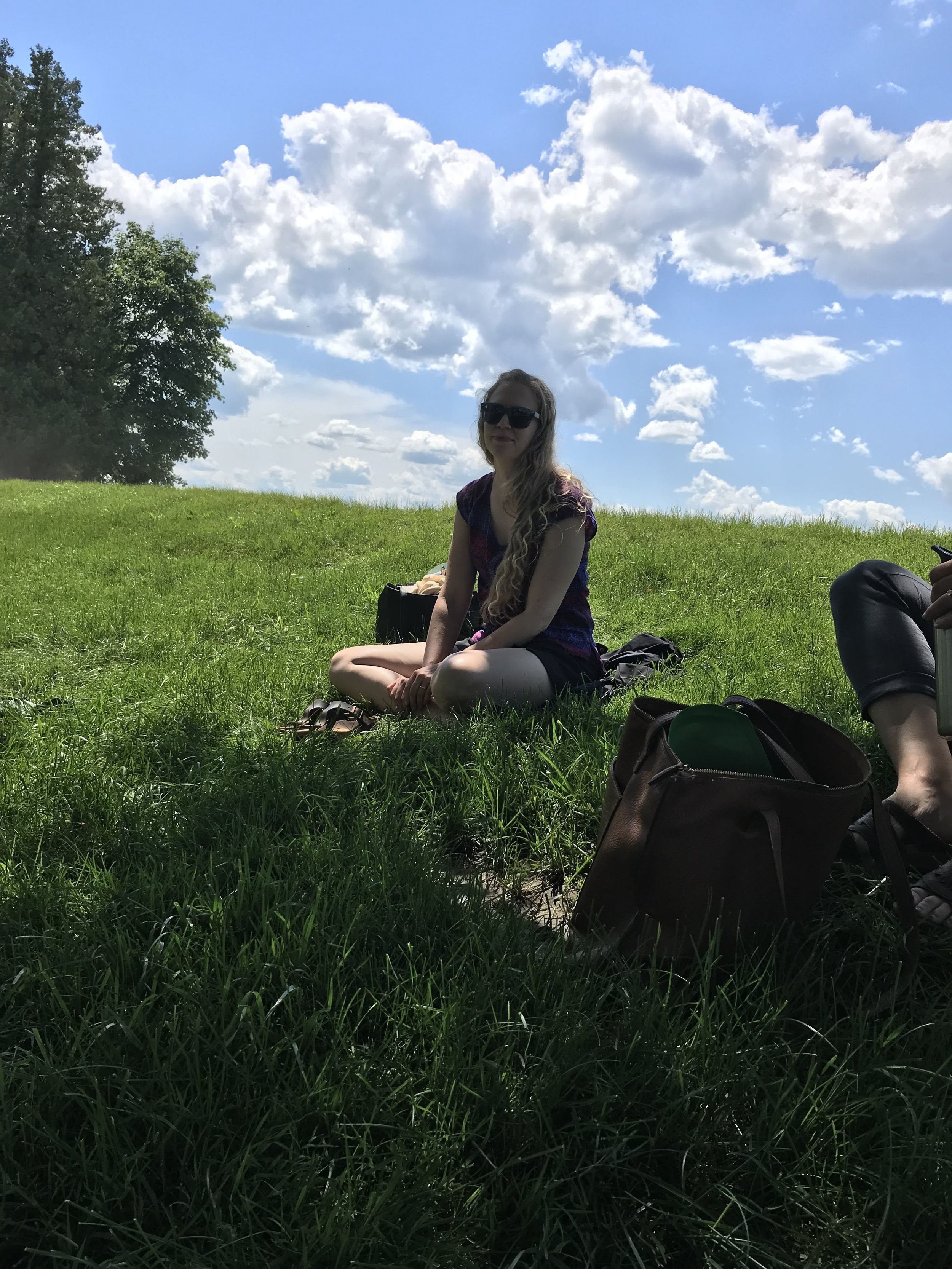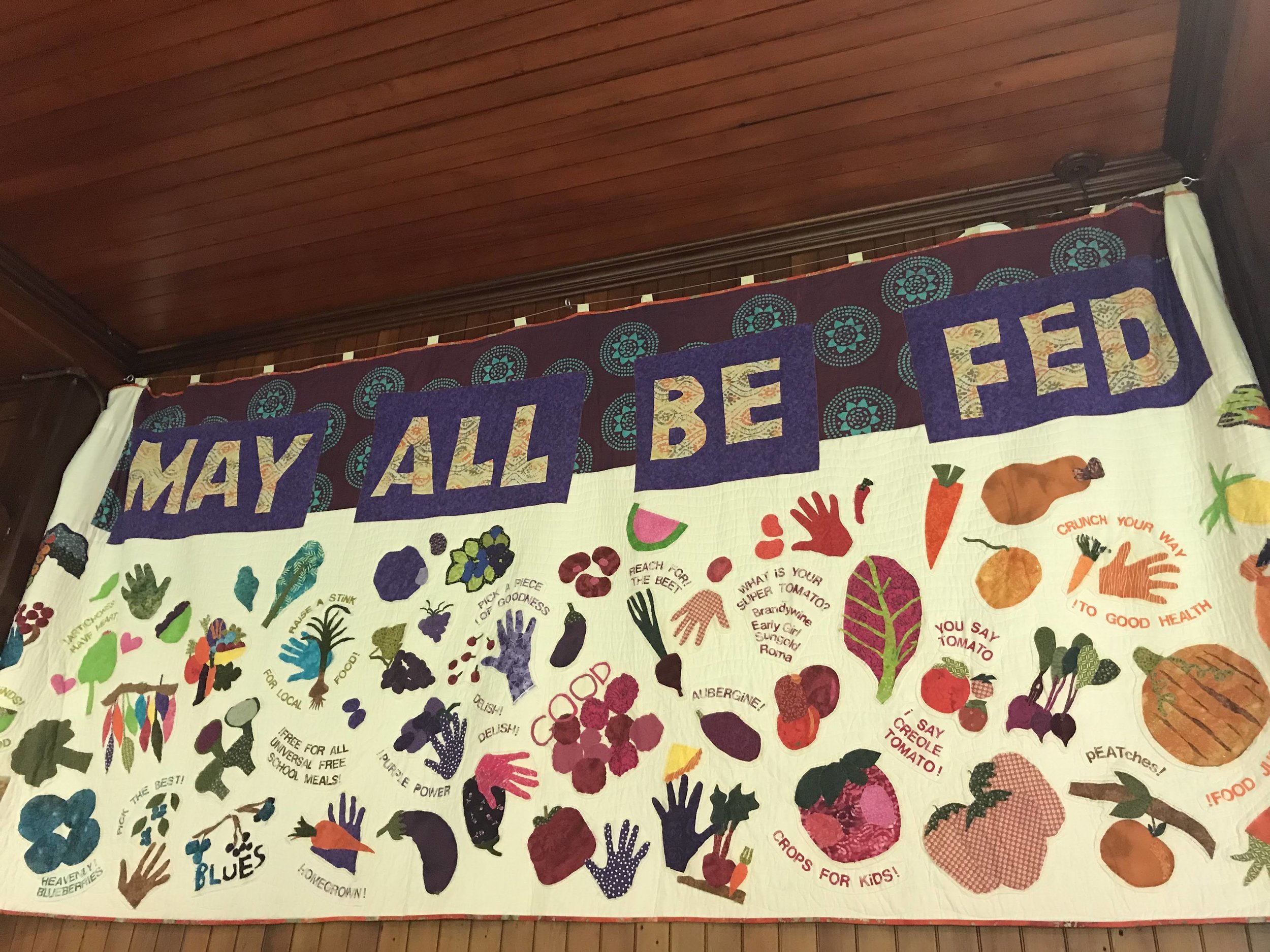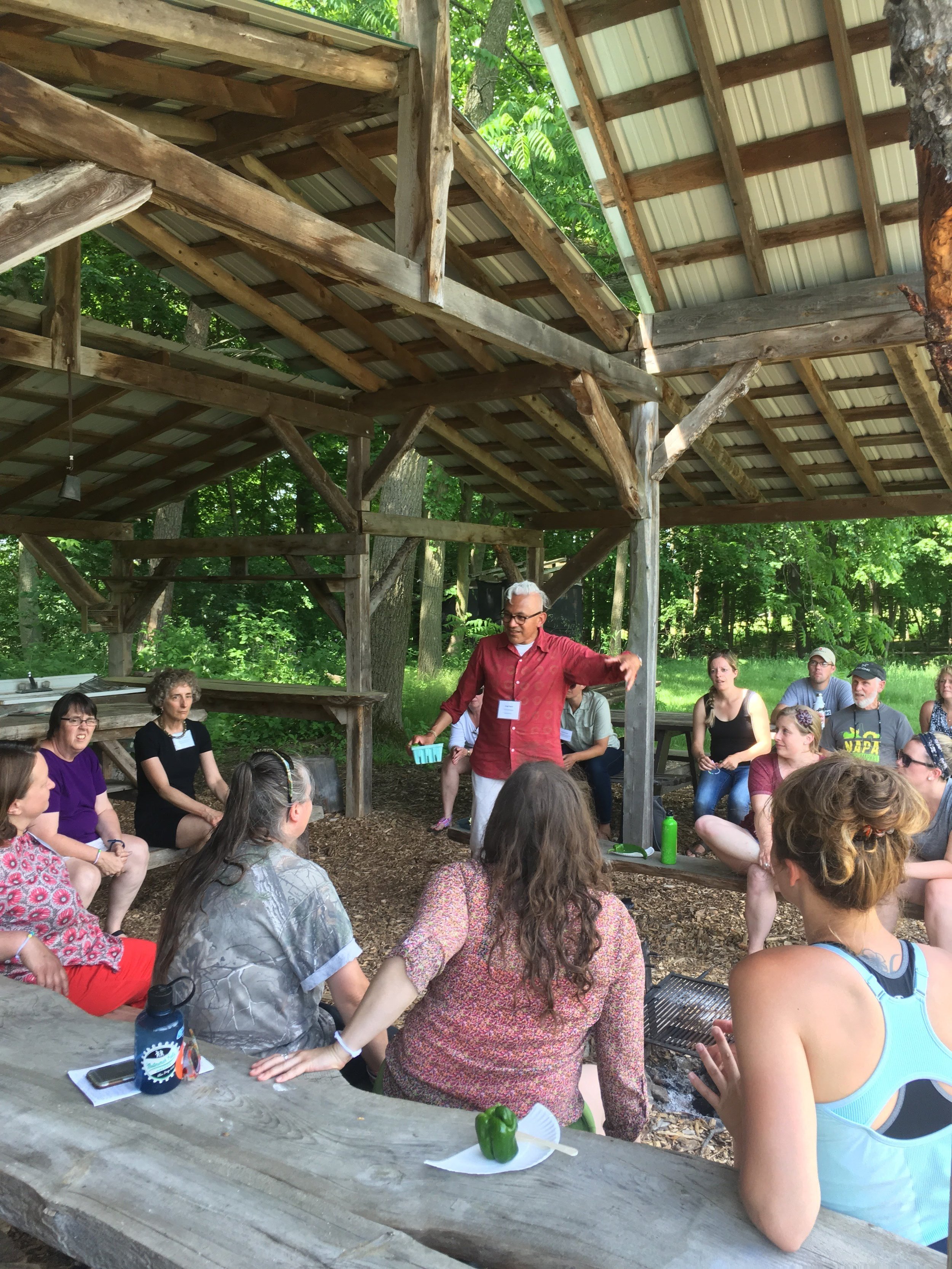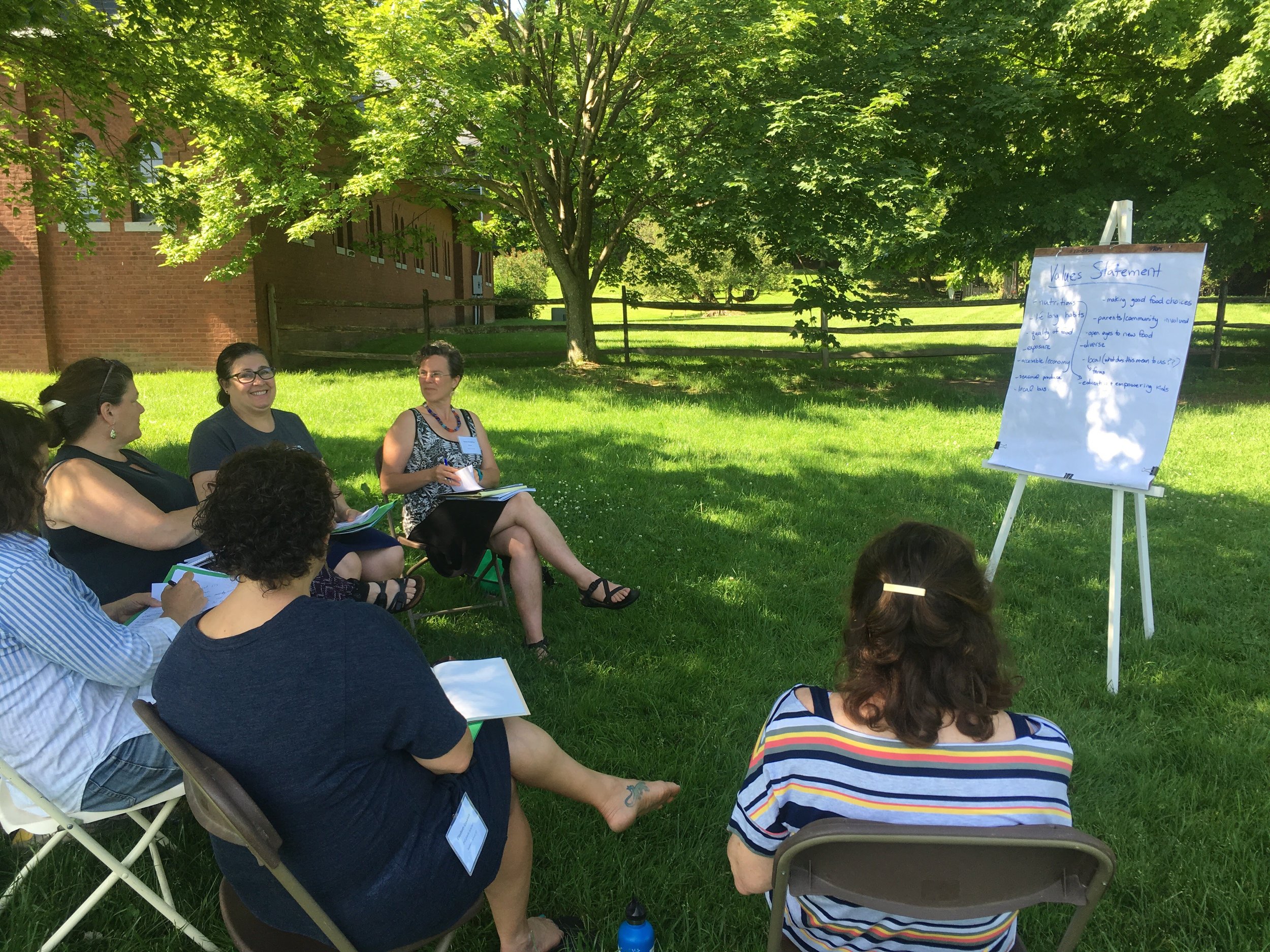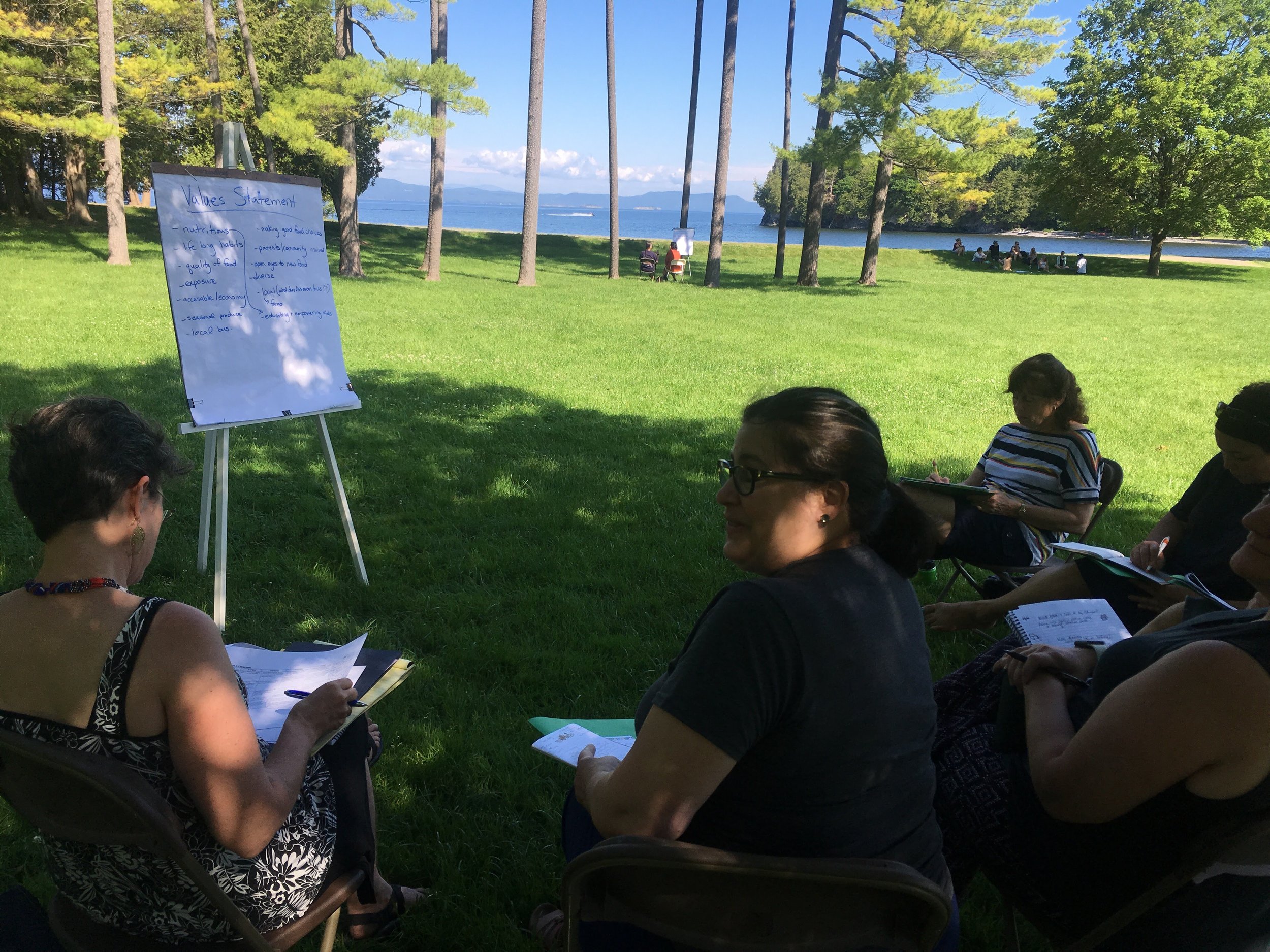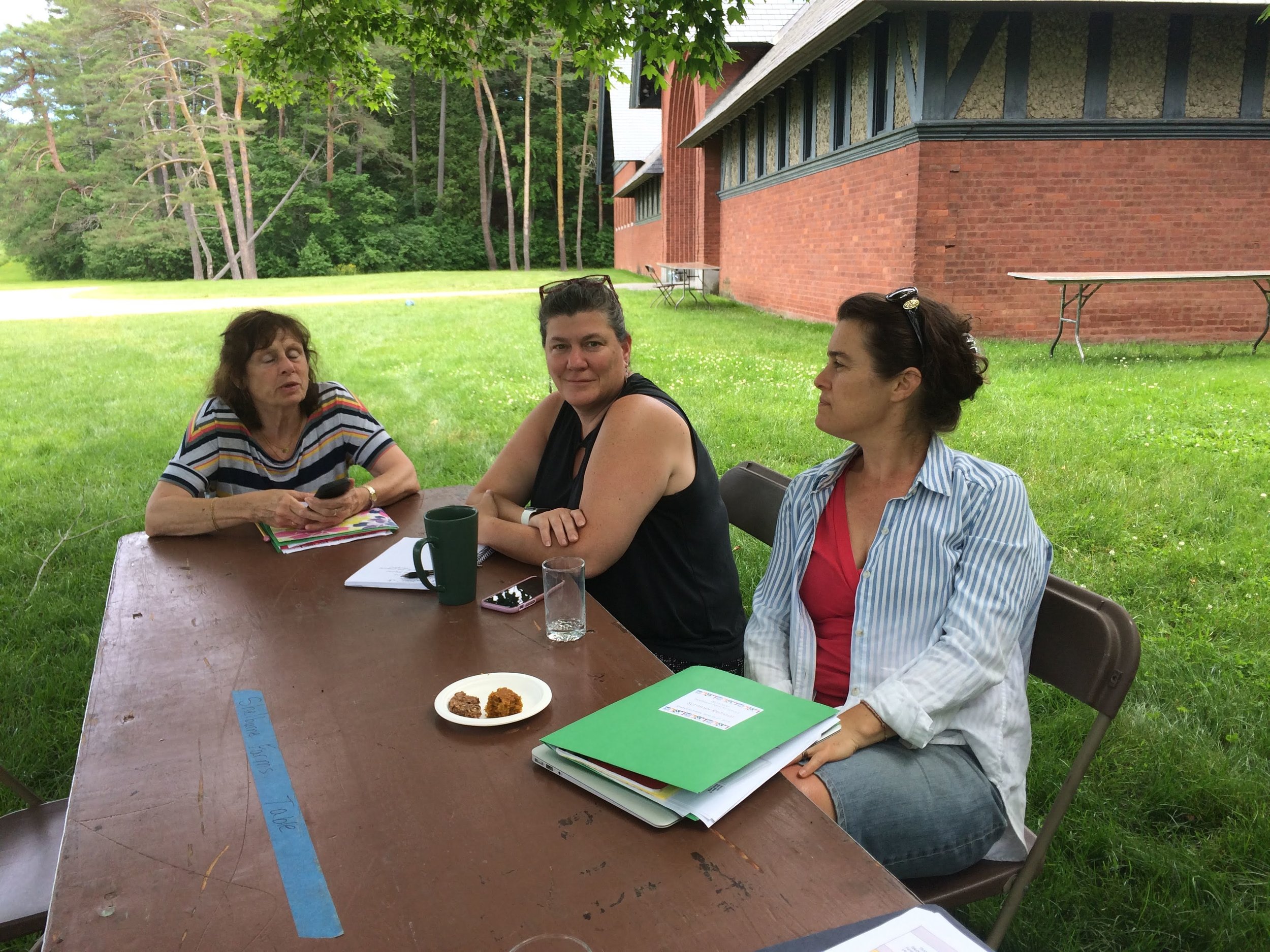Foodworks, the Groundworks-run community resource in Brattleboro, has increased its storage capacity while also transforming the shopping experience at their new Canal Street location where shoppers are invited to pick up the food they need for free. We had the opportunity to visit the location last month to participate in a trauma and food-focused community of practice with a group of Groundworks staff. The group was formed as a result of the Food and Trauma Training Food Connects put on last spring, in collaboration with Equity Solutions, and their takeaways from the training are present throughout the new community resource.
Upon arriving that morning, we stepped into the waiting room. Natural light streamed through the floor-to-ceiling windows, creating an inviting space for shoppers to hang out until it’s their turn. After checking in at the reception desk, shoppers can grab a cart or basket and walk the isles of food. Clear signage guides shoppers throughout the experience and indicates which items are limited, making it easy for first-time shoppers to feel right at home.
Shortly after we arrived, Ava, the Foodworks assistant, pulled around back with a delivery of frozen meats, fresh produce, and cakes. We were happy to lend a hand unloading the truck while we learned more about the decisions that went into creating a sensitive and welcoming space. Food placement is one area where some changes accompanied the move. While the desserts used to be located at the entrance, which are limited to one per household per month, weekly fresh produce now greet shoppers entering the store—items that are available to everyone and a healthy staple. “We tried to organize the space so that weekly items are the most easily accessible and monthly items are somewhat hidden,” Christine, the Foodworks coordinator, said. “Now, weekly shoppers don't have to feel bad walking past items they can't access.”
The registration process was streamlined and it’s now easy to get in and get the food community members need. A staff member is always at the registration desk, ensuring that shoppers can count on a familiar face to greet them when they enter. “Changing [registration] from a volunteer role to a staff-only role is one of the biggest changes we made in an attempt to be more trauma-informed.” Christine said, “Having this be a staff-only role has allowed much more consistency, familiarity, and comfort for patrons.” At check-out, another staff member or volunteer helps shoppers bag their food and answer any questions they may have.
It's these little changes that the Foodworks staff have found make a big difference when welcoming the community. Being upfront about expectations at registration and explaining the rationale behind the rules has led to a common understanding. Altering their hours so that donation pick-ups could be finished by the time Foodworks opens means that shoppers can rely on a more consistent experience and food selection each time they visit.
Overall, Christine has received mainly positive feedback. Shoppers have credited the waiting room, improved lighting, improved parking, and increased space as big improvements that have led to an experience more akin to your typical grocery store.
Get involved
Along with comfy chairs and a little library, the waiting room has space for food demos and tastings. Foodworks is looking for volunteers to put on demos highlighting the produce available on the shelves and also be a source of knowledge for shoppers looking for cooking advice. Christine also noted that food donations are low this time of year and welcomes shelf stable items as well as garden produce.
You don’t need to be experiencing homelessness to shop at Foodworks. Swing by during their open hours and talk to a staff member to learn more about how you can access this community resource. Foodworks is proud to serve the entire community and understands that sometimes folks need a lot of food assistance, and sometimes shoppers just need help with items like produce and bread which are often prohibitively expensive at the grocery store. With all these changes, their goal has been to eliminate stigma about accessing Foodworks.
Foodworks is located at 141 Canal Street and can be reached by phone at (802) 490-2412.
Their hours are:
Monday 11-4
Tuesday Seniors 12-2, Everyone 2-4
Wednesday 1-6
Friday 12-4
Last Saturday of each month 9-12











